It is recommended to change the brake fluid after 30 km or two years of operation
The brake hydraulic drive must be pumped to remove air that got there when changing the fluid or after replacing the hydraulic drive components
Signs of the presence of air in the hydraulic actuator:
- - increase the pedal stroke when the pedal is pressed once;
- - a gradual decrease in pedal travel with a simultaneous increase in its "stiffness" when the pedal is pressed again
If the pumping of the hydraulic drive is associated with the repair of one circuit, and the serviceability of the other circuit is known, only the repaired circuit can be pumped
When bleeding, the steps are the same as when changing the brake fluid
Brake fluid change
You will need an 8 wrench, brake fluid, a rubber or transparent hose, a transparent vessel
We install the car on a viewing ditch or lift
We replace the brake fluid according to the following scenario:
- - rear brake mechanism;
- - front left brake mechanism;
- - rear left brake mechanism;
- - front right brake
Preparing the car
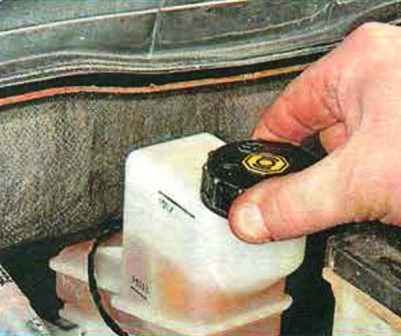
Unscrew and remove the cap of the reservoir of the main brake mechanism

We pump out the old brake fluid with a rubber bulb or syringe
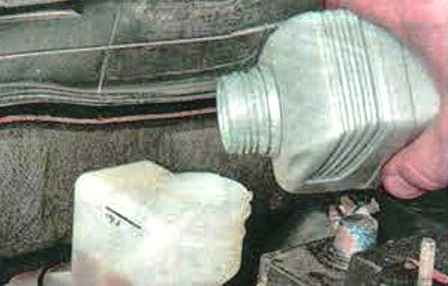
Add new brake fluid to the lower edge of the filler neck of the reservoir

We clean the air release valve of the right rear wheel from dirt

And remove the protective cap of the valve
We put the hose on the valve for releasing the air of the working cylinder and immerse the other end of the hose in a clean transparent vessel
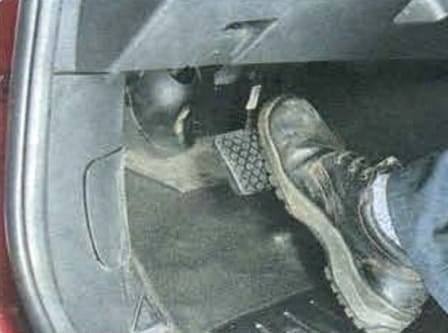
The assistant should sharply press the brake pedal four to five times (with an interval between pressing 1-2 seconds), then keep the pedal depressed
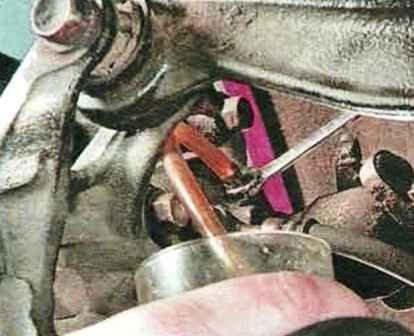
Unscrew the air release valve 1/2-3/4 turn.
Old (dirty) brake fluid will start to flow out of the hose.
The brake pedal should at this time smoothly go all the way down.
As soon as the liquid stops flowing, tighten the air release valve
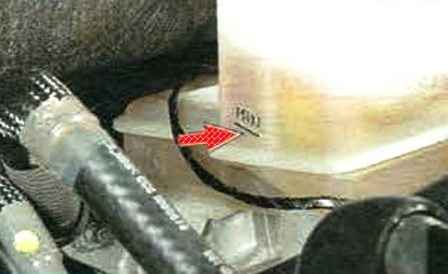
We monitor the level of brake fluid in the tank, not allowing it to drop below the "min" mark on the tank wall.
If necessary, add new brake fluid to prevent air from entering the hydraulic drive.
In this way, the old fluid is gradually displaced without draining the hydraulic system
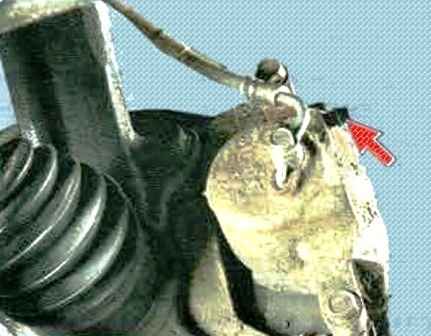
We clean the air outlet valve of the left front wheel from dirt
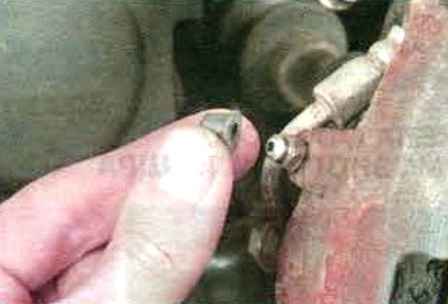
Remove the protective cap of the valve
We put the hose on the valve for releasing the air of the working cylinder and immerse the other end of the hose in a clean transparent vessel
The assistant should sharply press the brake pedal four to five times (with an interval between pressing 1-2 seconds), then keep the pedal depressed
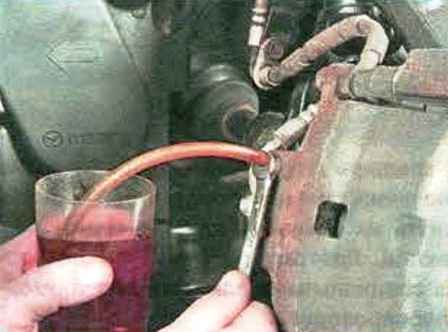
Unscrew the air release valve 1/2-3/4 turn.
Old (dirty) brake fluid will start to flow out of the hose.
The brake pedal should at this time smoothly go all the way down.
As soon as the liquid stops flowing, tighten the air release valve
After that, we replace the brake fluid in the second circuit (first in the working cylinder of the brake mechanism of the left rear wheel, and then the front right wheel)
Repeat the operations until the fluid in the hydraulic drive is completely replaced (clean brake fluid without air bubbles should flow out of the hose)
After changing the brake fluid, we put on protective caps on the air release valves.





